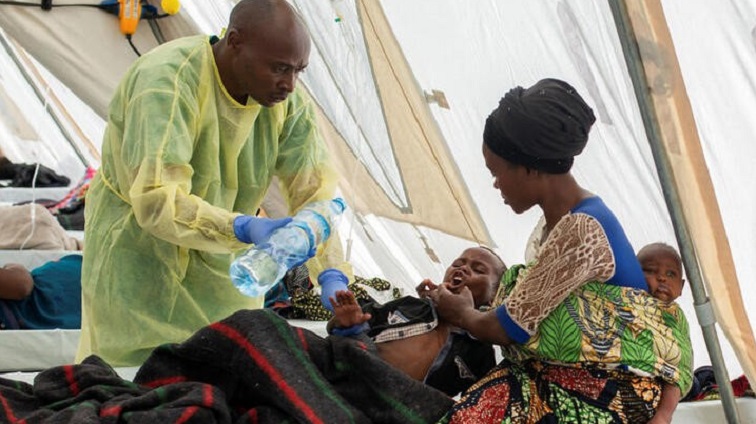
Cholera is proliferating in Sudan amid flooding and displacement
According to officials, Sudan is currently experiencing a cholera epidemic for the second year in a row, which has resulted in the deaths of at least 28 individuals in the past month. The outbreak is occurring in regions that are overcrowded with individuals who have fled the country’s 16-month-old conflict.
Shible Sahbani, the country director of the World Health Organization (WHO), informed Reuters in Port Sudan that 658 cases of cholera have been documented in five states since the current wave began on July 22.
Sahbani stated that the mortality rate is 4.3%, which is significantly higher than that of other outbreaks, due to the fact that a significant portion of the country’s health infrastructure has been destroyed or disintegrated, and the staffing has been reduced by displacement.
He stated that approximately 200,000 individuals are at a significant risk of contracting an illness.
The war between the army and the paramilitary Rapid Support Forces (RSF) has resulted in the displacement of over 10 million individuals within Sudan and beyond its borders, which has led to one of the world’s most severe humanitarian crises.
Dengue fever and measles are among the five concurrent disease epidemics that the nation is currently managing.
The RSF has made significant progress in Sudan, preventing the population from receiving assistance due to the army’s refusal to grant access and the looting of provisions and hospitals by RSF soldiers. Rains have complicated efforts to deliver aid to the western region of Darfur.
International experts have concluded that the Zamzam camp in Darfur is currently experiencing a catastrophe. This region is particularly susceptible to cholera and is frequently inundated during rainfall.
Haitham Mohamed Ibrahim, the health minister, reported that the previous cholera wave, which occurred between October 2023 and May 2024, resulted in approximately 12,000 cases and over 350 fatalities. He also noted that there had been no significant outbreaks in the nine years preceding the conflict.
The current outbreak is primarily located in the states of Kassala and Gedaref, which are home to 1.2 million displaced individuals.
A Reuters correspondent captured footage of stagnant rainwater mixing with refuse in large ponds and pools of water that attracted insects in Gedaref. According to a local official, the majority of diseases were caused by sewage, low water quality, and insects.
The RSF’s raids have resulted in a significant number of individuals being forced to seek refuge in congested, makeshift displacement centers. The lavatories have overflowed as a result of the persistent, heavier-than-average rainfall. Cholera thrives in environments where food and water are contaminated with infected feces, and it is transmitted through these sources.
Sahbani stated that the RSF had largely controlled states such as Khartoum and Gezira, which had also experienced cholera cases. Additionally, the Kordofan and Darfur regions are at risk of experiencing outbreaks.
“The obstacle is the transportation of supplies to the locations where they are required.” Many highways are currently impassable as a result of the rainy season, in addition to security and bureaucratic constraints, he said.
In a virtual briefing on Friday, he informed reporters that the International Coordinated Group for vaccine allocation (ICG) had approved the delivery of 455,000 cholera vaccine doses to Sudan, which he described as “good news in the midst of this horrible crisis.”
Ibrahim stated that the army-aligned administration had implemented “unorthodox measures,” such as air drops, to facilitate the delivery of vaccines and supplies to the RSF-controlled areas and isolated army-controlled areas.
The United Nations’ humanitarian appeal for Sudan is only approximately one-third funded, and both officials underscored that the necessity of the situation in Sudan far outweighed the aid effort.
All Categories
Recent Posts
Man United could lose Yoro, which would be a huge blow
McCarthy: I am able to change things in Kenya
Tags
+13162306000
zoneyetu@yahoo.com



